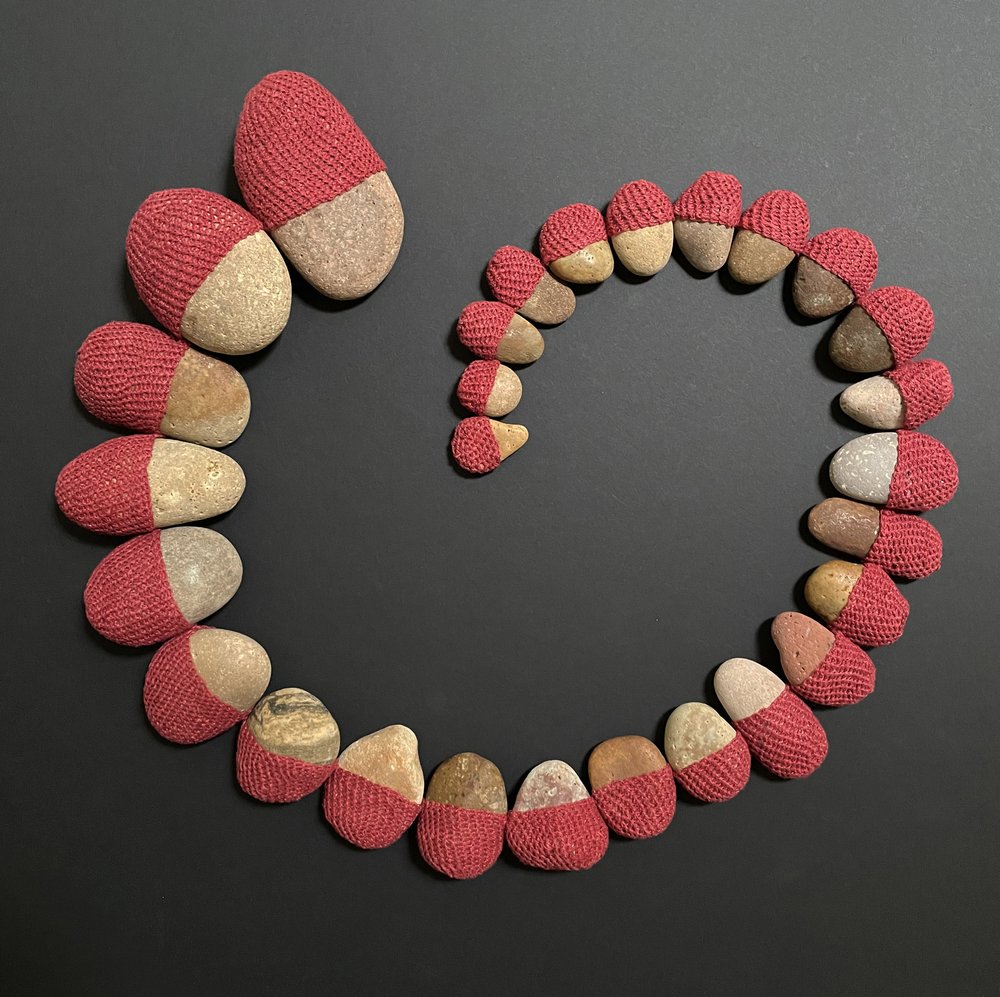FIELD NOTES
observations and reflections on the explorations and experiments of the past two months
The basement dye lab.
Crushing eggs shell to raise the PH in a dye bath.
In the Gardens: seedlings sprouting in the greenhouse and studio flats.
Warm and bright in here for the lettuce sprouts.
Shuttles at rest.
In the Dye Lab:
Years ago I used natural dyes - I even taught classes at UNH on these processes. But I let my skills fade and for decades focused on fiber active dyes for their consistency and light fasteness. Now I am eager to rekindle my skills of these living, organic dyes. The science and information around natural dyes has exploded - and even the nomenclature has changed — they are now called eco-dyes!!
This winter I built a dye lab in my basement - I am so fortunate now to have a dedicated space for these processes. I’ve outfitted this space with second hand pots, pans and other equipment for dyeing yarns and fabric.
And so it is one experiment after another ~ kitchen waste (tea, avocado pits, onion skins), including my attempts at an organic indigo vat - with the dehydrated indigo from Bali
Dehydrated indigo from Bali.
Linens dyed with onion skins and first attempts using natural indigo.
Woven brocade piece fresh off the loom. Next steps include rusting, and over dye with indigo.
In the Studio:
Playing with engineered woven design that will later be over-dyed (once I master the organic indigo bath!)
Mixed media collage in process.
And on the collage table, always a work in process.








